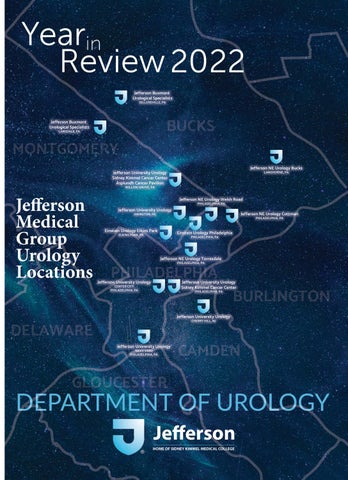Mickey 17 (Robert Pattinson) just won’t die — which is precisely what he’s supposed to do. As the expendable on an outer space expedition to colonize the new planet Nilfheim in 2054, Mickey’s mission as a human lab rat and risk-taker is to die and die again, his body reprinted each day, his memories and personality uploaded to each new iteration, in a sort of body horror “Groundhog Day.” But this Mickey, the 17th version, well, he has some surprising tenacity, or maybe just good luck.
This is the premise of acclaimed Korean filmmaker Bong Joon Ho’s dystopian satire “Mickey 17,” adapted from the 2022 novel “Mickey7” by Edward Ashton. Over the course of eight features made across 25 years, director Bong has alternated between Korean-language social dramedies (“Barking Dogs Never Bite,” “Memories of Murder,” “Mother,” the Oscar-winning 2019 sensation “Parasite”) and goofier sci-fi romps, often involving creatures, frequently in English, with international casts of stars (“The Host,” “Snowpiercer,” “Okja”). “Mickey 17” lands decidedly in the latter camp, and encompasses all of the director’s predilections: social commentary, whiplash tonal shifts, fixations on food and how it organizes principles of power, wealth and status-based hierarchies, and menacing yet adorable creatures.
Mickey Barnes has landed in this expendable pickle thanks to some hastily made decisions. Back in 2050, on Earth, he and his best friend Timo (Steven Yeun) land in hot water with a predatory loan shark. Desperate to escape his chainsaw-wielding associates, they apply for a space colonization mission to Nilfheim, led by disgraced U.S. Rep. Kenneth Marshall (Mark Ruffalo), whose fanatical acolytes sport red baseball caps. Mickey accidentally applies to be an expendable, while smooth-talking Timo ends up as a helicopter pilot.
Mickey might be on the lowest rung of the social ladder, constantly dehumanized by his lab rat job, dispatched on dangerous tasks, exposed to the elements, suffering through the new viruses of Nilfheim, the lab techs barely catching the reprints of his body as it emerges from the printer day after day. He’s bullied by the rest of the crew, who ask him, “what’s it like to die?” and shrug off his plight. But he has love, in the form of Nasha (Naomi Ackie) a soldier/police officer, and the two enjoy clandestine romps even though Marshall has outlawed sex — too much calorie expenditure.
The problem arises when in their lazy dismissal of Mickey’s experience, the lab assumes he has died on Niflheim and prints Mickey 18 — suddenly there are two Mickeys, and multiples have been banned for potential misuse of the technology. The pathetic 17 and vengeful, angry 18, coupled with the arrival of an angry herd of creatures indigenous to Nilfheim (which Marshall dubs “creepers”) throws the expedition and its goals into chaos.
Though “Mickey 17” lands squarely in the juncture between “Snowpiercer” and “Okja” in its storytelling and themes, in this dystopian film, Bong is concerned largely with matters of the heart and soul, especially as they pertain to the body. Pattinson throws himself wholeheartedly into this performance, and as it turns out, he was already a perfect Bong performer. Both director and actor seek to defy tone and expectation, and Pattinson’s performance, using a weird little voice and delivering oddball line readings and inflections, fits perfectly with the auteur’s unique approach to humor and sincerity.
The rest of the ensemble works to mixed results: Ruffalo plays Marshall with a Trumpian affect and a game show host/televangelist style, licking his chops gilded with large white veneers; his wife (Toni Collette) fawns with her long manicure and salivates over sauce (yes, sauce). Marshall views colonization as a media project, harking to Nazi propaganda and the current political media landscape, though it’s a theme that isn’t entirely explored. Ruffalo and Collette’s broad performances serve the story symbolically while Pattinson holds a more nuanced center with Ackie.
Though the nonlinear story is busy with flashbacks and stuffed with themes, characters and real-world analogues (some of which are not fully fleshed out), the worldview that emerges is distinctly Bong: absurdist and yet cautiously hopeful about the future. He makes the argument that humanity’s future is dependent on dignity and respect for all life forms, even creepers and multiples. While it does feel as though the film’s social commentary has lagged behind our present moment, these themes of vanquishing hierarchies, inequality and power structures that are built for abuse feel both as urgent as they ever have and as representative of his work as ever. This is Bong in one of his signature modes, and while “Mickey 17” does not reach the heights of his other work, it does not disappoint.
‘Mickey 17’
3 stars (out of 4)
MPA rating: R (for violent content, language throughout, sexual content and drug material)
Running time: 2:17
How to watch: In theaters March 7
Related Articles
Movie review: In ‘Riff Raff,’ a misfit family reunion goes violently off the rails
Eagan native Eva Erickson shows her strength, and makes an enemy, on ‘Survivor 48’
Key Oscar moments, from Zoe Saldaña’s emotional win and ‘Oz’ opening to Kieran Culkin’s baby wish
‘Anora’ dominates with five Oscars, including best picture
21 unforgettable looks at the Oscars


